Charles E W Bean, Diaries, AWM38 3DRL 606/264/1 - 1914 - 1938 - Part 11



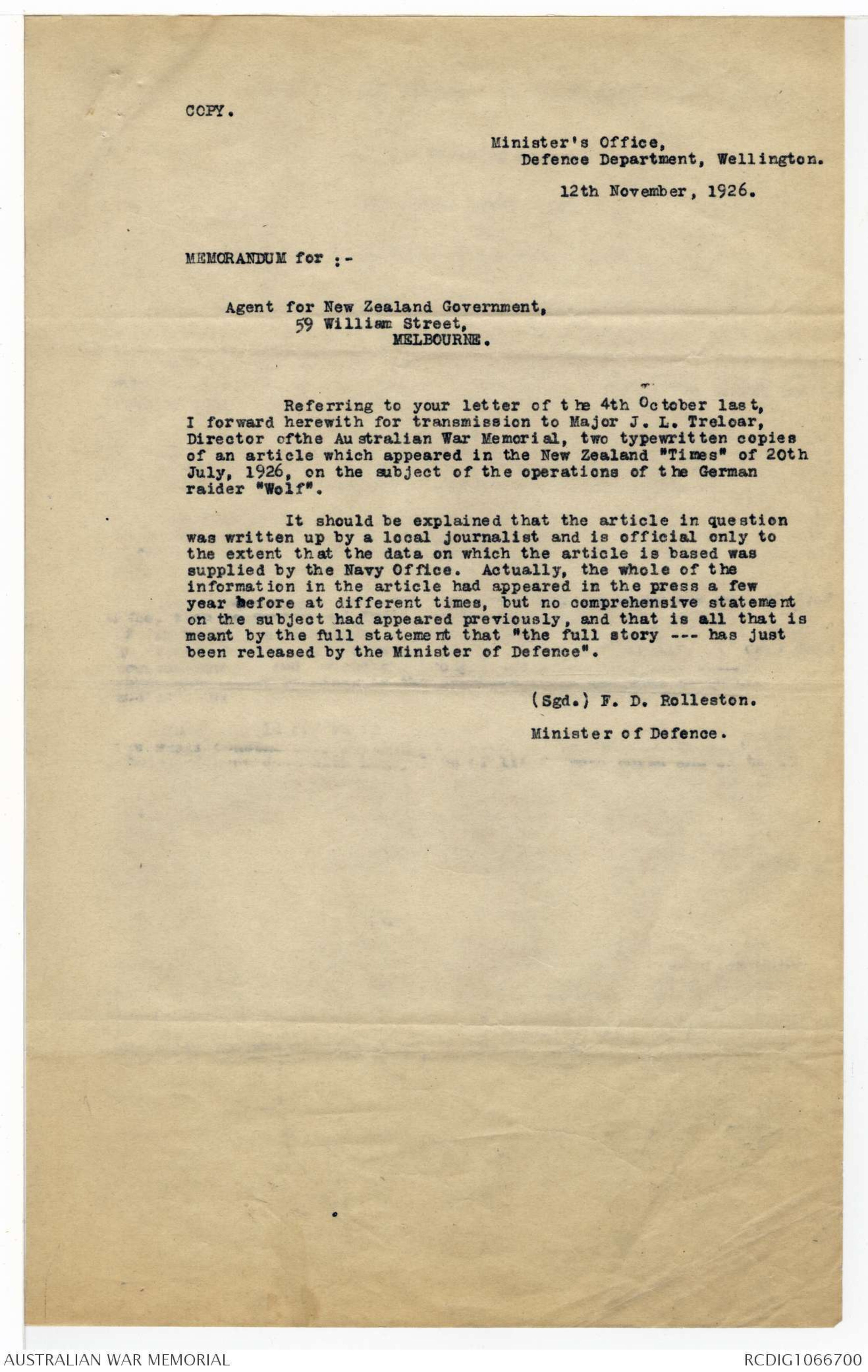
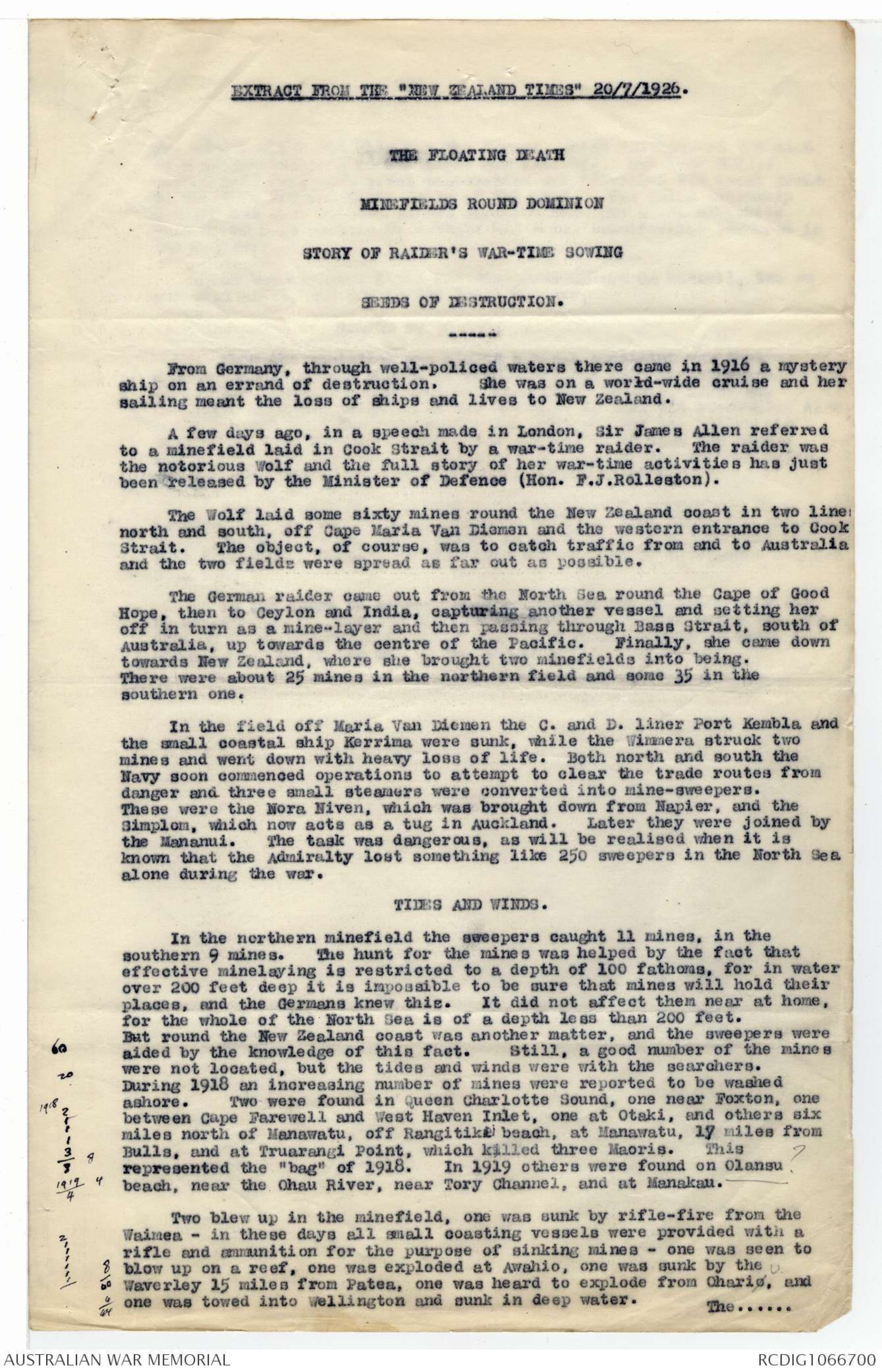
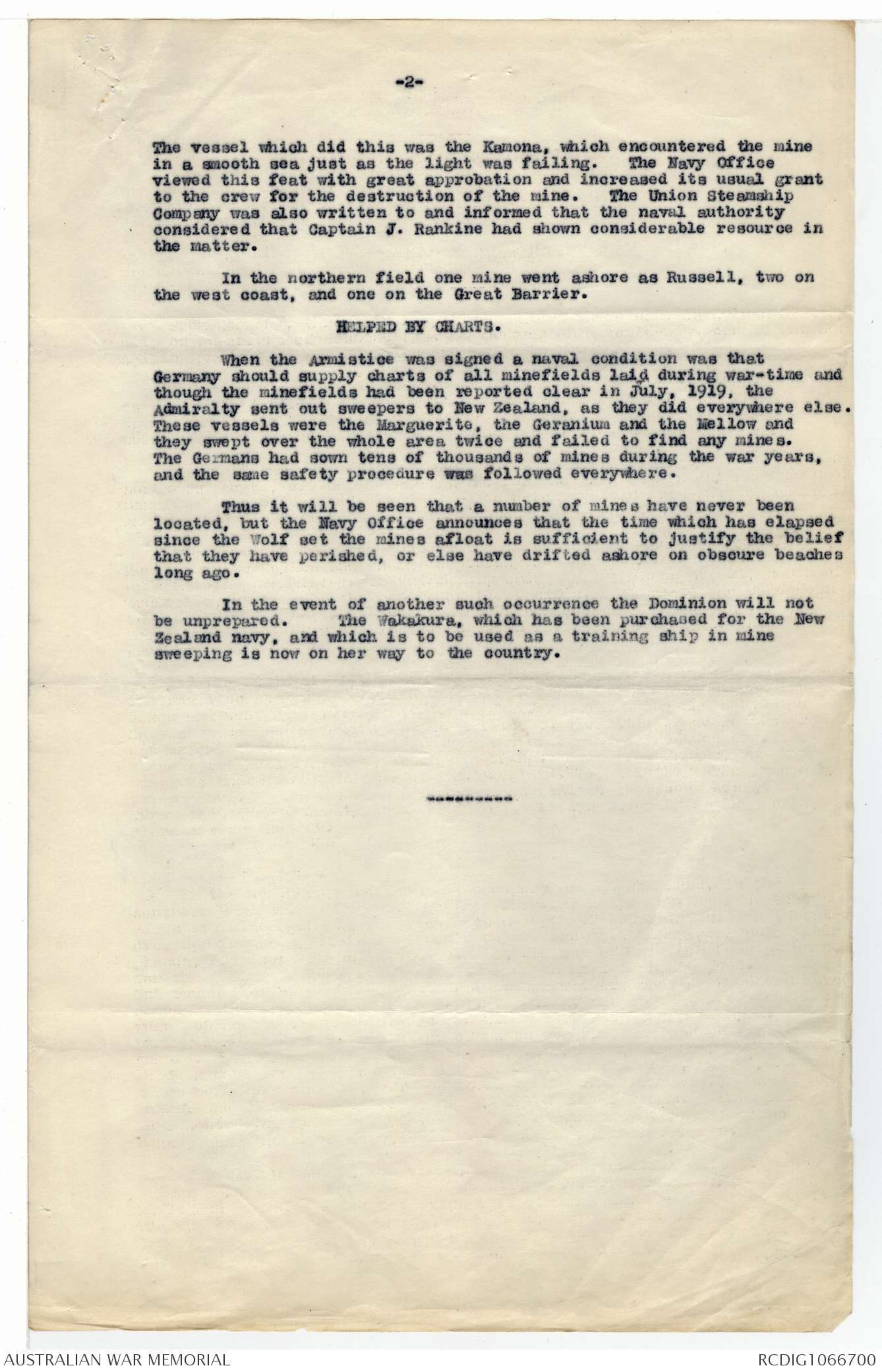
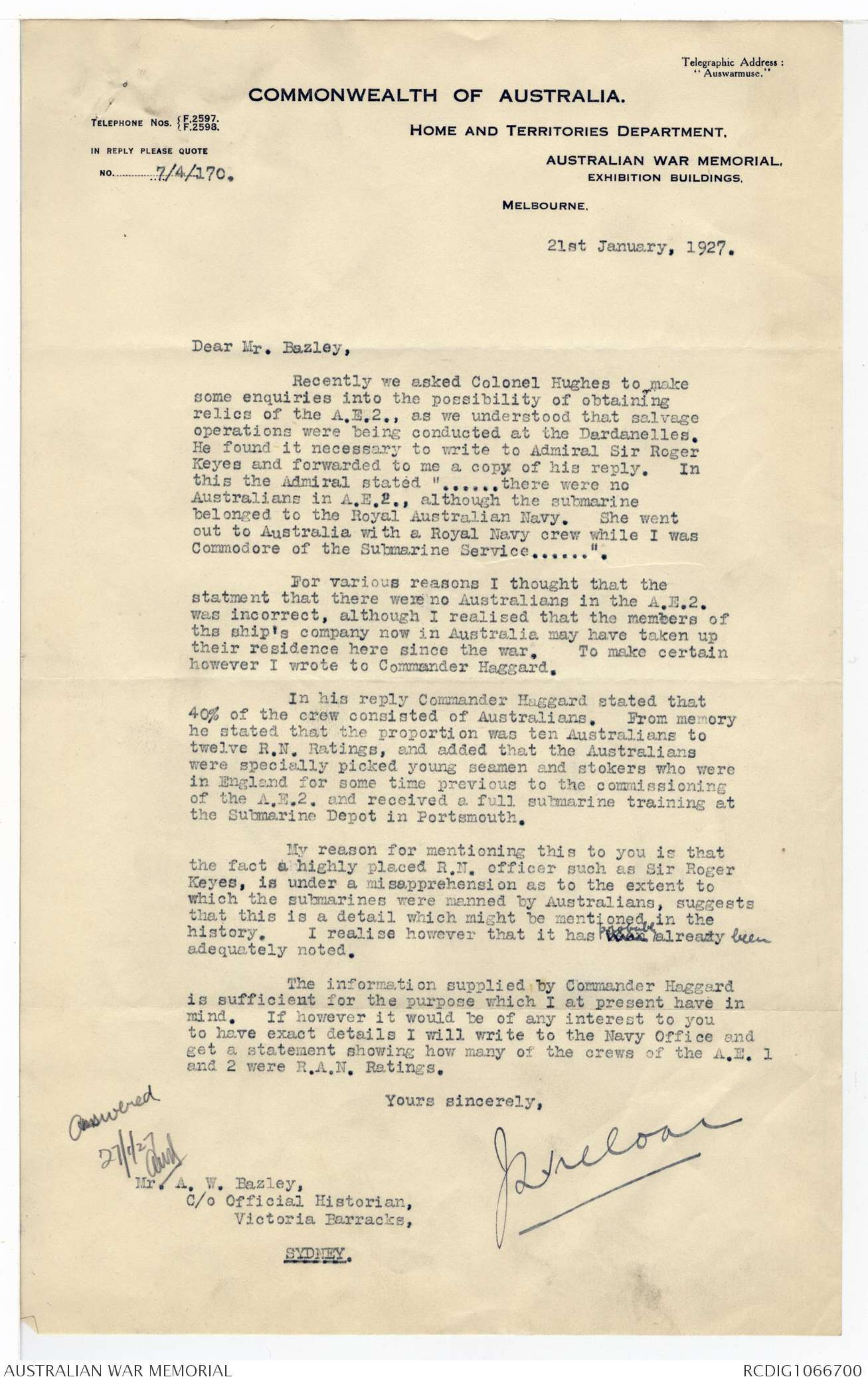


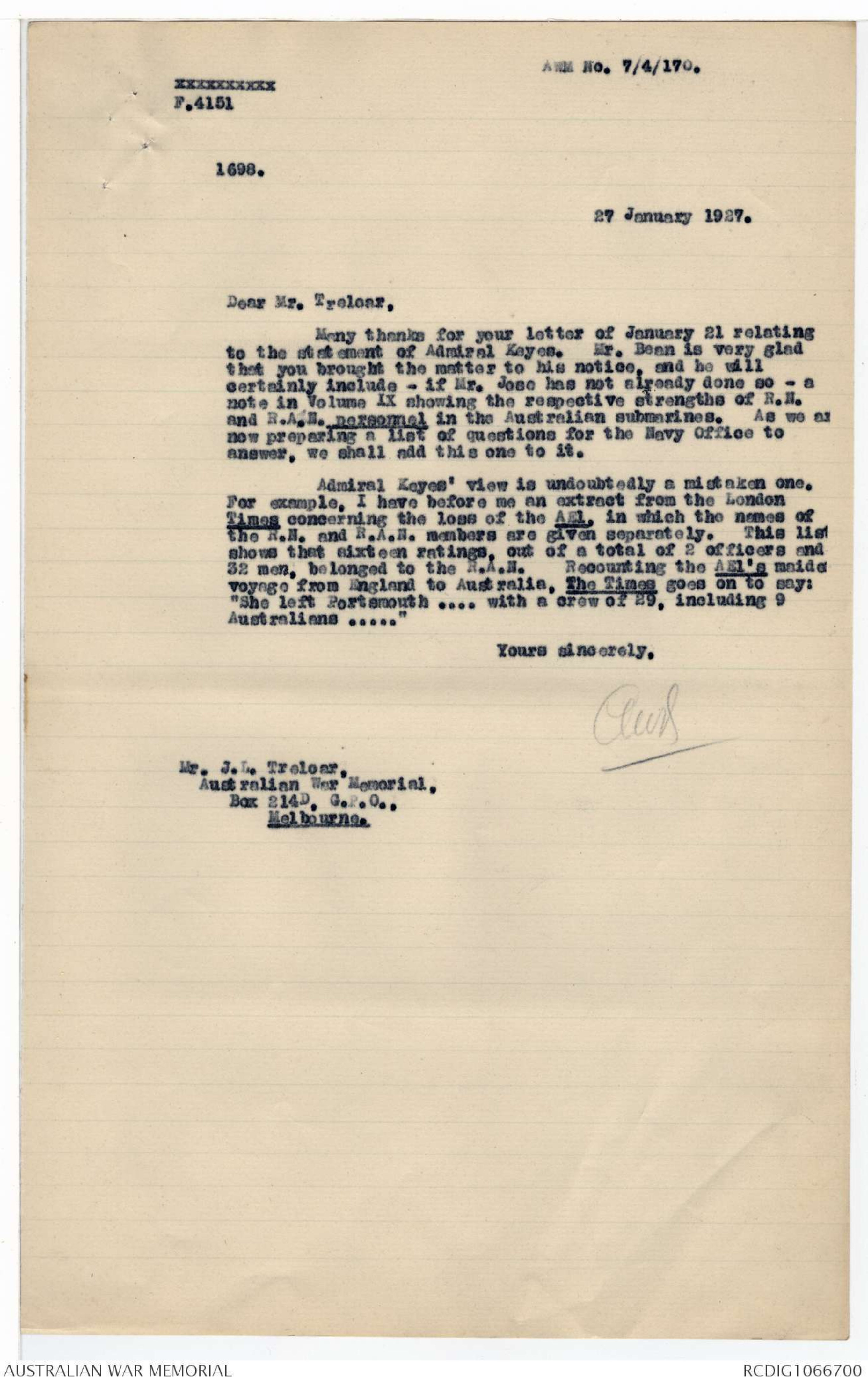
EXTRACT FROM WARNING FORM "B"
ISSUED TO CAPTAIN H.J. KELL, MASTER OF S.S. "WIMMERA",
BY CAPTAIN F.H.C. BROWNLOW, R.A.N., DISTRICT NAVAL OFFICER,
SYDNEY, on 17th JUNE 1918 :-
TRADE ROUTES DURING WAR - SPECIAL COURSE FORM.
The Master of the S.S. "WIMMERA" on his voyage from Sydney to
Auckland leaving Sydney at p.m. on the 17th instant will adopt
the following route at a speed of 13 knots. He expects to
arrive at Auckland about a.m. on the 21st June 1918.
To NEW ZEALAND:- Leave Sydney at right angles to Coast and keep
outside the 130 Fathom Line wherever possible on any Coast.
FOR WELLINGTON and THROUGH COOK STRAIT:- Keep 30 miles clear
of West Haven Inlet and Cape Farewell Spit.
FOR AUCKLAND AND PORTS ON EAST COAST:- Keep to Northward of
Three King Island and keep outside the 130 Fathom line and not
to approach within 30 miles of Great Barrier Island except in
daylight and then keep close watch for Floating Mines.
(Original to be signed by the Master and retained by D.N.O.)
Date. 17th June 1918. (sgd) H.J. KELL.
Master S.S. "WIMMERA".
Deaprtment of the Navy,
MELBOURNE, 15th July 1916.
SENIOR NAVAL OFFICER, WELLINGTON, reports on 26/6/1918, that
"WIMMERA" sunk by mine 5-15 a.m. Wednesday 26th Hopper Point,
bearing S.E. half East magnetic 24½ miles.
According to calculations in Hydrographic Branch (21/10/26)
the "WIMMERA", when struck by mine, was several miles within the
130 fathom line.
"WIMMERA" was on the return journey to Sydney and would have been
in possession of Route Orders issued by the New Zealand Naval.
These would, however, be in agreement with those issued at Sydney.
As "WIMMERA" was sunk in the New Zealand area all investigations
as to her being inside prohibited areas were carried out by the
New Zealand Naval Authorities.
Sec/VW.
October, 1926.
Dear Macandie,
Could you please supply any documents
which would enable Bean to check the following paragraphs
in Jose's Volume:-
P.10. "Furthermore it must be here emphasised that
neither the Cumberland nor the Wimmera would
have been lost if their masters had obeyed
orders and not taken short cuts through
prohibited areas."
In relation to the wireless messages, sent
by the Matunga to Rabaul, which led to the
steamer's capture:
P.11. "Donaldson broke the regulation and doubled the
risks by sending a second (message) to the same
station at 9 a.m. on the 30th."
P.15. "About the 15th (August, 1917) the possibility
of raider action began to dawn on the searchers,
and attention was called by the Director of the
Radio Service to Donaldson's fatal message of
the 29th of July - especially to his unauthorised
use of the vessel's call-sign;"
Yours faithfully,
WAN
G.L. Macandie Esq.,
NAVAL BOARD.
F2597
2598
TELEPHONE Nos.
CENT. 297
298
COMMUNICATIONS TO BE ADDRESSED TO
"THE DIRECTOR."
IN REPLY PLEASE QUOTE
NO. 12/5/126
COMMONWEALTH OF AUSTRALIA.
HOME AND TERRITORIES DEPARTMENT.
TELEGRAPHIC ADDRESS
"AUSWARMUSE."
AUSTRALIAN WAR MEMORIAL.
EXHIBITION BUILDINGS, MELBOURNE.
6th December, 1926.
Dear Mr. Bazley,
In the Sydney "Bulletin" of 12th August we
noticed a paragraph in which it was stated reported that a statement
describing the mine-laying activities of the German raider
"Wolf" in New Zealand waters had been released by the
Minister for Defence.
We asked the New Zealand Government Agent
to obtain a copy for us. This we have just received in
duplicate. I am sending a copy herewith as it may be of
interest to you in connection with the Naval Volume. As
we have the original copy, the duplicate sent herewith
may be treated by you as a spare.
Yours sincerely,
JL Treloar
Mr. A. W. Bazley,
C/o. Official Historian,
Victoria Barracks,
SYDNEY. N.S.W.
COPY.
Minister's Office,
Defence Department, Wellington.
12th November, 1926.
MEMORANDUM for :-
Agent for New Zealand Government,
59 William Street,
MELBOURNE.
Referring to your letter of the 4th October last,
I forward herewith for transmission to Major J. L. Treloar,
Director of the Australian War Memorial, two typewritten copies
of an article which appeared in the New Zealand "Times" of 20th
July, 1926, on the subject of the operations of the German
raider "Wolf".
It should be explained that the article in question
was written up by a local journalist and is official only to
the extent that the data on which the article is based was
supplied by the Navy Office. Actually, the whole of the
information in the article had appeared in the press a few
year before at different times, but no comprehensive statement
on the subject had appeared previously, and that is all that is
meant by the full statement that "the full story --- has just
been released by the Minister of Defence".
(Sgd.) F. D. Rolleston.
Minister of Defence.
EXTRACT FROM THE "NEW ZEALAND TIMES" 20/7/1926.
THE FLOATING DEATH
MINEFIELDS ROUND DOMINION
STORY OF RAIDER'S WAR-TIME SOWING
SEEDS OF DESTRUCTION.
From Germany, through well-policed waters there came in 1916 a mystery
ship on an errand of destruction. She was on a world-wide cruise and her
sailing meant the loss of ships and lives to New Zealand.
A few days ago, in a speech made in London, Sir James Allen referred
to a minefield laid in Cook Strait by a war-time raider. The raider was
the notorious Wolf and the full story of her war-time activities has just
been released by the Minister of Defence (Hon. F.J.Rolleston).
The Wolf laid some sixty mines round the New Zealand coast in two lines
north and south, off Cape Maria Van Diemen and the western entrance to Cook
Strait. The object, of course, was to catch traffic from and to Australia
and the two fields were spread as far out as possible.
The German raider came out from the North Sea round the Cape of Good
Hope, then to Ceylon and India, capturing another vessel and setting her
off in turn as a mine-layer and then passing through Bass Strait, south of
Australia, up towards the centre of the Pacific. Finally, she came down
towards New Zealand, where she brought two minefields into being.
There were about 25 mines in the northern field and some 35 in the
southern one.
In the field off Maria Van Diemen the C. and D. liner Port Kembla and
the small coastal ship Kerrima were sunk, while the Wimmera struck two
mines and went down with heavy loss of life. Both north and south the
Navy soon commenced operations to attempt to clear the trade routes from
danger and three small steamers were converted into mine-sweepers.
These were the Nora Niven, which was brought down from Napier, and the
Simplom, which now acts as a tug in Auckland. Later they were joined by
the Mananui. The task was dangerous, as will be realised when it is
known that the Admiralty lost something like 250 sweepers in the North Sea
alone during the war.
TIDES AND WINDS.
In the northern minefield the sweepers caught 11 mines, in the
southern 9 mines. The hunt for the mines was helped by the fact that
effective minelaying is restricted to a depth of 100 fathoms, for in water
over 200 feet deep it is impossible to be sure that mines will hold their
places, and the Germans knew this. It did not affect them near at home,
for the whole of the North Sea is of a depth less than 200 feet.
But round the New Zealand coast was another matter, and the sweepers were
aided by the knowledge of this fact. Still, a good number of the mines
were not located, but the tides and winds were with the searchers.
During 1918 an increasing number of mines were reported to be washed
ashore. Two were found in Queen Charlotte Sound, one near Foxton, one
between Cape Farewell and West Haven Inlet, one at Otaki, and others six
miles north of Manawatu, off Rangitikei beach, at Manawatu, 17 miles from
Bulls, and at Truarangi Point, which killed three Maoris. This
represented the "bag" of 1918. In 1919 others were found on Olansu [*?*]
beach, near the Ohau River, near Tory Channel, and at Manakau.
Two blew up in the minefield, one was sunk by rifle-fire from the
Waimea - in these days all small coasting vessels were provided with a
rifle and ammunition for the purpose of sinking mines - one was seen to
blow up on a reef, one was exploded at Awahio, one was sunk by the
Waverley 15 miles from Patea, one was heard to explode from Chariou, and
one was towed into Wellington and sunk in deep water.
The.....
[[*60
20
1918
2
1
1
1
3
8 8
1919 4
4
2
1
1
1
1
1
1
8
60
6
64*]]
-2-
The vessel which did this was the Kamona, which encountered the mine
in a smooth sea just as the light was failing. The Navy Office
viewed this feat with great approbation and increased its usual grant
to the crew for the destruction of the mine. The Union Steamship
Company was also written to and informed that the naval authority
considered that Captain J. Rankine had shown considerable resource in
the matter.
In the northern field one mine went ashore as Russell, two on
the west coast, and one on the Great Barrier.
HELPED BY CHARTS.
When the Armistice was signed a naval condition was that
Germany should supply charts of all minefields laid during war-time and
though the minefields had been reported clear in July, 1919, the
Admiralty sent out sweepers to New Zealand, as they did everywhere else.
These vessels were the Marguerite, the Geranium and the Mellow and
they swept over the whole area twice and failed to find any mines.
The Germans had sown tens of thousands of mines during the war years,
and the same safety procedure was followed everywhere.
Thus it will be seen that a number of mines have never been
located, but the Navy Office announces that the time which has elapsed
since the Wolf set the mines afloat is sufficient to justify the belief
that they have perished, or else have drifted ashore on obscure beaches
long ago.
In the event of another such occurrence the Dominion will not
be unprepared. The Wakakura, which has been purchased for the New
Zealand navy, and which is to be used as a training ship in mine
sweeping is now on her way to the country.
Telegraphic Address:
"Auswarmuse."
COMMONWEALTH OF AUSTRALIA.
TELEPHONE Nos. F.2597.
F.2598.
IN REPLY PLEASE QUOTE
NO. 7/4/170.
HOME AND TERRITORIES DEPARTMENT.
AUSTRALIAN WAR MEMORIAL,
EXHIBITION BUILDINGS,
MELBOURNE.
21st January, 1927.
Dear Mr. Bazley,
Recently we asked Colonel Hughes to make
some enquiries into the possibility of obtaining
relics of the A.E.2., as we understood that salvage
operations were being conducted at the Dardanelles.
He found it necessary to write to Admiral Sir Roger
Keyes and forwarded to me a copy of his reply. In
this the Admiral stated "......there were no
Australians in A.E.2., although the submarine
belonged to the Royal Australian Navy. She went
out to Australia with a Royal Navy crew while I was
Commodore of the Submarine Service.....".
For various reasons I thought that the
statment that there were no Australians in the A.E.2.
was incorrect, although I realised that the members of
the ship's company now in Australia may have taken up
their residence here since the war. To make certain
however I wrote to Commander Haggard.
In his reply Commander Haggard stated that
40% of the crew consisted of Australians. From memory
he stated that the proportion was ten Australians to
twelve R.N. Ratings, and added that the Australians
were specially picked young seamen and stokers who were
in England for some time previous to the commissioning
of the A.E.2. and received a full submarine training at
the Submarine Depot in Portsmouth.
My reason for mentioning this to you is that
the fact a highly placed R.N. officer such as Sir Roger
Keyes, is under a misapprehension as to the extent to
which the submarines were manned by Australians, suggests
that this is a detail which might be mentioned in the
history. I realise however that it has been probably already been
adequately noted.
The information supplied by Commander Haggard
is sufficient for the purpose which I at present have in
mind. If however it would be of any interest to you
to have exact details I will write to the Navy Office and
get a statement showing how many of the crews of the A.E. 1
and 2 were R.A.N. Ratings.
Yours sincerely,
JL Treloar
[*Answered
27/1/27
AWB*]
Mr. A. W. Bazley,
C/o Official Historian,
Victoria Barracks,
SYDNEY.
Extract from The Times. Monday, Sept. 21, 1914.
AUSTRALIAN NAVY LOSS.
Submarine A.E.1. SUNK.
Two Officers & Thirty-two Men on Board.
The following communication was issued from the Admiralty yesterday
morning:-
The Secretary of the Admiralty regrets to state that, accordingthat, according to a telegraphic communication received from the
Commonwealth Naval Board of Administration, Melbourne, the following
officers, petty officers, and men were members of the crew of H.M.
Australian Submarine A.E.1. which is reported lost:-
Besant, Thomas F., Lieutenant Commander.
Scarlett, Hon. Leopold F., Lieutenant R.N.
Barton, Sidney Charles, Leading Stoker 309518.
Dance, George, Signalman. 230063.
Dennis, Frederick George, Able Seaman 220438.
Gough, Henry Joseph, Stoker 1st Class 204767
Guilbert, Thomas Martin, Petty Officer, 208663.
Guild, James, Stoker 1st Class 302880.
Guy, William Elliott, Leading Stoker 290601.
Hodge, Henry, Petty Officer 196497.
Hodgkin, George, Able Seaman. 226508.
Lowe, Thomas Frederick, Chief E.R.A. 2nd Class. 271421.
Marsland, John Albert, E.R.A. 1st Class. 270573.
Meek, John, Acting Leading Stoker, 218676.
Stretch, Harry, Chief Stoker. 278358.
Tribe, William, Petty Officer. 191329.
Wilson, Joseph William, Chief E.R.A. 2nd Class. 270296.
Woodland, Frederick Wm., Able Seaman 208916. R.F.R. Portsmouth
B5589.
In addition to the foregoing the following ratings of the Royal
Australian Navy are also reported to have been on board:-
Baker, Cyril, Telegraphist (?)
Blake, Ernest, Stoker 1st Class.
Bray, John, Stoker 1st Class.
Corbould, Gordon, Leading Seaman.
Fettes, James, E.R.A.
Fisher, Arthur Henry, Able Seaman (?)
Holt, Richard Baines, Stoker 1st Class.
Jarman, Jack, Able Seaman.
Maloney, John, Stoker Petty Officer.
Messenger, John, E.R.A.
Reardon, John, Able Seaman.
Small, Robert, Petty Officer.
Thomas, James Benjamin, A.B.
Waddilove, William, Stoker Petty Officer.
Wilson, Pertry, Stoker 1st Class.
Wright, Charles Frederick, Stoker Petty Officer.
Lieutenant Commander Thomas Fleming Besant entered the Navy as a
cadet in January, 1900, and attained the rank of a Lieutenant in 1905
and that of Lieutenant Commander in December last. He was appointed
to the command of Submarine A.E.1. in September last.
Lieutenant the Hon. Leopold Florence Scarlett, R.N. brother of
Lord Abinger, was born on March 17, 1889, as the sixth and
posthumous son of the late Lieutenant Colonel Leopold J.Y.C. Scarlett,
Scots Guards. One of his brothers, the Hon. Lawrence J.P? Scarlett,
R.N. WAS LOst while serving on H.M.S. Victoria in 1893.
REAR ADMIRAL PATEY'S REPORT.
Melbourne. Sept. 19.
Rear Admiral Sir George Patey reports that 35 officers and men were
on board the submarine.
She was last seen in the afternoon of the 14th returning from patrol
work.
No wreckage has been seen and it is supposed that the disaster was the
result of an accident.-Reuter.
2.
THE BOAT'S VOYAGE TO SYDNEY.
The A.E.1. and her sister boat the A.E.2. the first two submarines of
the Royal Australian Navy, were built at Barrow by Messrs Vickers last
year. It will be remembered that in the earlier part of the present
year both boats made the voyage of about 12,500 miles from this
country to Australia under their own power, the longest journey ever
undertaken by this class of vessel. The A.E.1. which was launched
at Barrow on May 22, 1913, had a length of 176 ft., with a beam of
22ft. 6in., her displacement when submerged being about 800 tons. The
propelling machinery consisted of two sets of the Vickers heavy oil
engines, each capable of developing over 800b.h.p. According to the
design these gave a surface speed of 15 knots. The A.E.1. was armed
and fitted with a number of tubes for launching the latest Whitehead
21in. torpedoes. She left Portsmouth on March 2, with a crew of 29,
including nine Australians, under Lieutenant Besant, and on the way
to Sydney called at various ports. Sydney was reached on May 24.
AWM No. 7/4/170.
F. 4151
1698.
27 January 1927.
Dear Mr. Treloar,
Many thanks for your letter of January 21 relating
to the statement of Admiral Keyes. Mr. Bean is very glad
that you brought the matter to his notice, and he will
certainly include - if Mr. Jose has not already done so - a
note in Volume IX showing the respective strengths of R.N.
and R.A.N. personnel in the Australian submarines. As we are
now preparing a list of questions for the Navy Office to
answer, we shall add this one to it.
Admiral Keyes' view is undoubtedly a mistaken one.
For example, I have before me an extract from the London
Times concerning the loss of the AE1, in which the names of
the R.N. and R.A.N. members are given separately. This list
shows that sixteen ratings, out of a total of 2 officers and
32 men, belonged to the R.A.N. Recounting the AE1's maiden
voyage from England to Australia, The Times goes on to say:
"She left Portsmouth.... with a crew of 29, including 9
Australians ....."
Yours sincerely,
AWB
Mr. J.L. Treloar,
Australian War Memorial,
Box 214D, G.P.O.,
Melbourne.
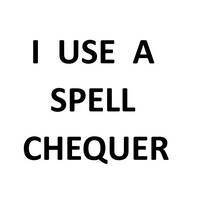 Not Yet Replaced By AI
Not Yet Replaced By AIThis transcription item is now locked to you for editing. To release the lock either Save your changes or Cancel.
This lock will be automatically released after 60 minutes of inactivity.